What muscles do you use for running?
Learn exactly what muscles you need to recruit for maximum efficiency and to help you offset running injuries
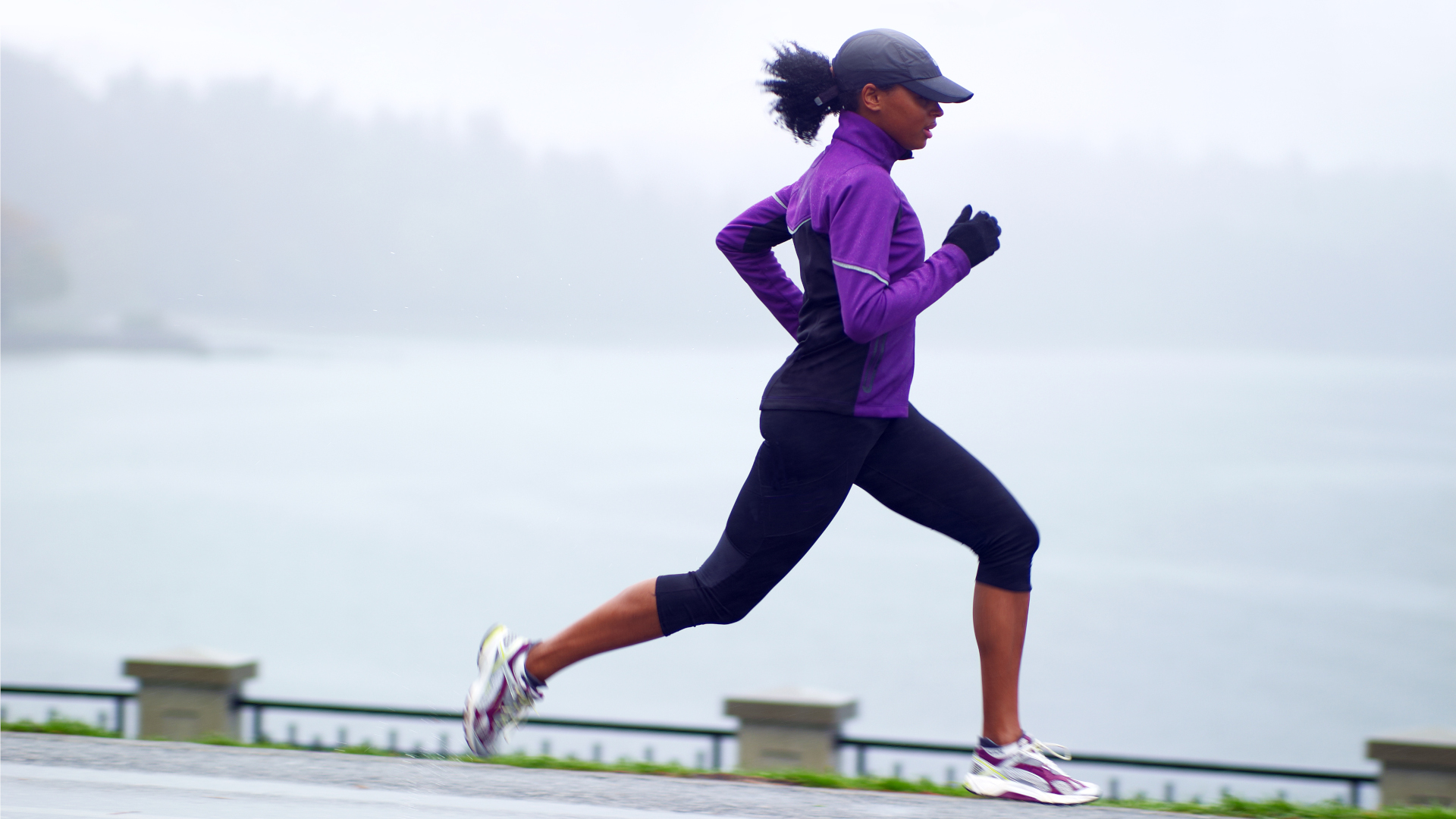
What muscles do you use for running? It’s a common enough question, and one that’s helpful to know the answer to, especially if you’re looking to improve your running performance. After all, if you know which muscles you use in running, you’ll understand what needs to be strong and therefore you can focus your training at the gym. Then, when you’re out in your trail running shoes getting your miles in, you’ll know exactly what muscles to recruit for efficiency and to help you offset running injuries.

What muscles do you use for running?
Yes, everyone will tell you that running is a full body exercise and it's true, but we couldn’t go through every single muscle you use, and there are some main muscle groups that you primarily use when you go running, so we’ll focus on these. It should come as no surprise to you that most of these are in your legs, but there are some upper body muscles that get a little workout, too.
Quadriceps
Let’s start with the most obvious muscle group: your quadriceps. If you’ve run longer or harder than usual, or just started running, these muscles on the fronts of your thighs are likely to feel the most sore the next day, thanks to Delayed Onset Muscle Soreness and the fact that your quads do a lot of work on any run.
Your quads are four muscles on the front of each thigh that connect your pelvis to your kneecap. Your quads contract to straighten your leg, and extend when your knee is bent. They’re also capable of eccentric contraction, which means they’re extended while under load, and you get a lot of this when you’re running downhill. Your quads also absorb shock whenever your foot hits the ground, help to stabilize your knee cap and play a secondary role in hip flexion.
As you can see, your quads are working all the time when you’re running, which is why runners often have larger or well-defined quads. In fact, many runners are quad dominant, at the expense of their lateral chain muscles such as their glutes, which can cause postural issues and back and knee pain. If that sounds like you, check out our guide to pilates for running to help you get back into balance.

Hip flexors
Up above – and connected to – your quads lie your hip flexor muscles. On the front of each hip you have five muscles whose job it is to flex your hip, which is when you move your leg forward and up. Basically, every time you bring your leg forward in running, you’re strengthening your hip flexors, and the higher you lift your knee, the more you’re using them, which makes running stairs great for strengthening them.
In ordinary life, if you sit a lot, you can end up with quite weak hip flexors that feel tight, so running is a good way to activate and strengthen these muscles, although it’s equally important to strengthen the muscles on the other side of your hips for balance, otherwise known as your glutes.
All the latest inspiration, tips and guides to help you plan your next Advnture!

Glutes
Glutes are an interesting muscle group for runners. Your gluteus muscles, or buttocks, are three muscles that originate at the top of your pelvis and insert into your sitting bones or upper thighs. Their primary jobs are to extend your help, meaning move your leg back, and externally rotate your hips. Sprinters tend to have very well developed glutes due to that forceful hip extension they perform to power them forward, whereas joggers, and middle and long distance runners often under-recruit their glutes and run with weak glutes, which can lead to low back pain and conditions like IT Band syndrome. If you can learn to engage your glutes when running and focus more on using them to push off your foot, you can avoid pain conditions and run faster.
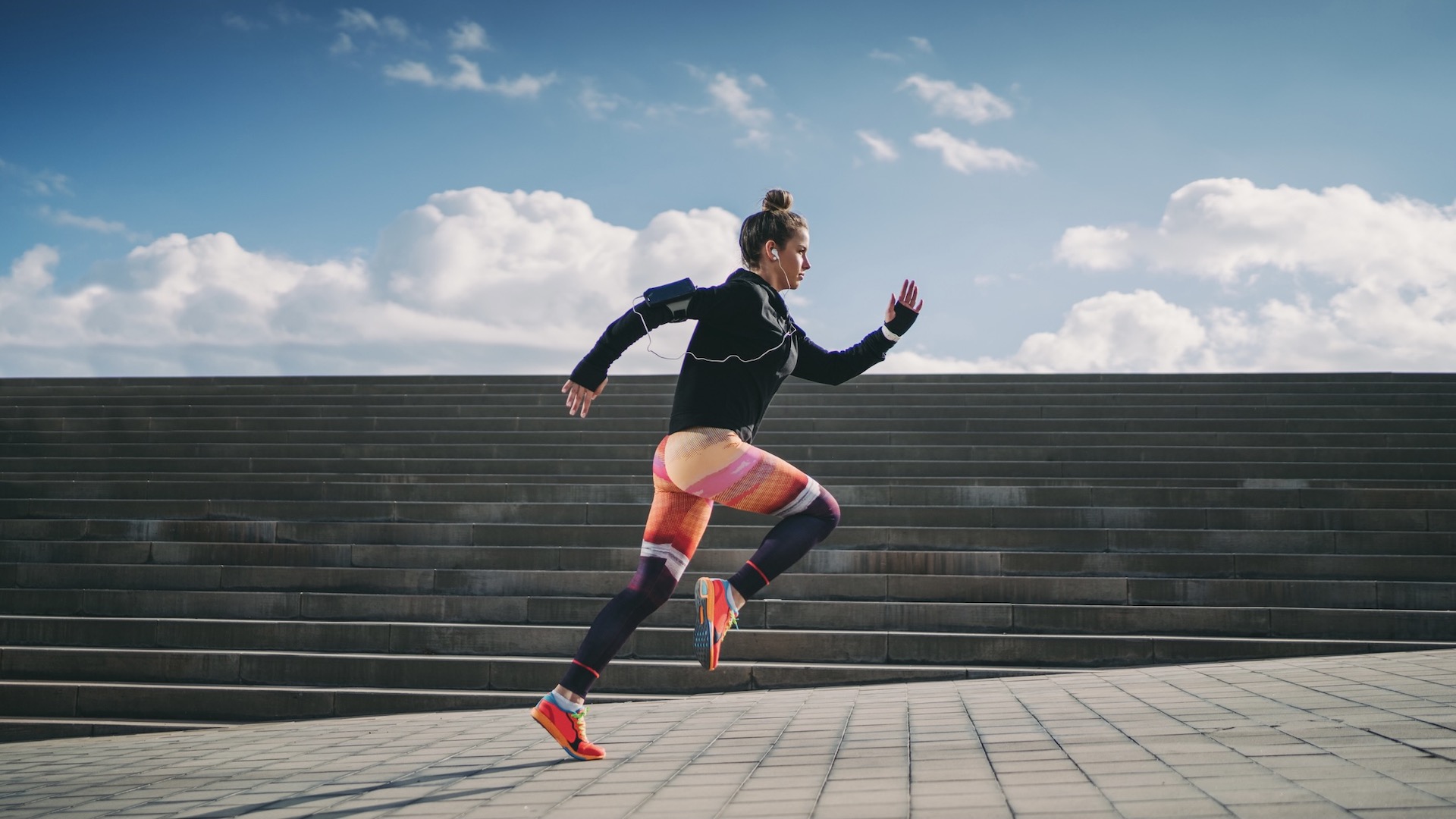
Hamstrings
Below your glutes lie your hamstrings, synergistic muscles to your quads which run down the backs of your thighs. You have three hamstrings on each leg, which extend to help straighten your knee, and contract to bend your knee. Your hamstrings get a good workout when you’re running, which is why many runners feel as though they have 'tight' hamstrings. Of course, your hamstrings don’t change length, but the muscle fibers can certainly retain a constant state of contraction when you’re a runner.
Every time your heel strikes the ground, your hamstrings start contracting to effectively pull you forward. This is why your hamstrings don’t get as much of a workout on a treadmill where the conveyor belt does the work for you, and why most trainers recommend setting it on an incline to make your hamstrings work a bit harder. The more you bend your knee and kick your heel up, the harder your hamstrings work.
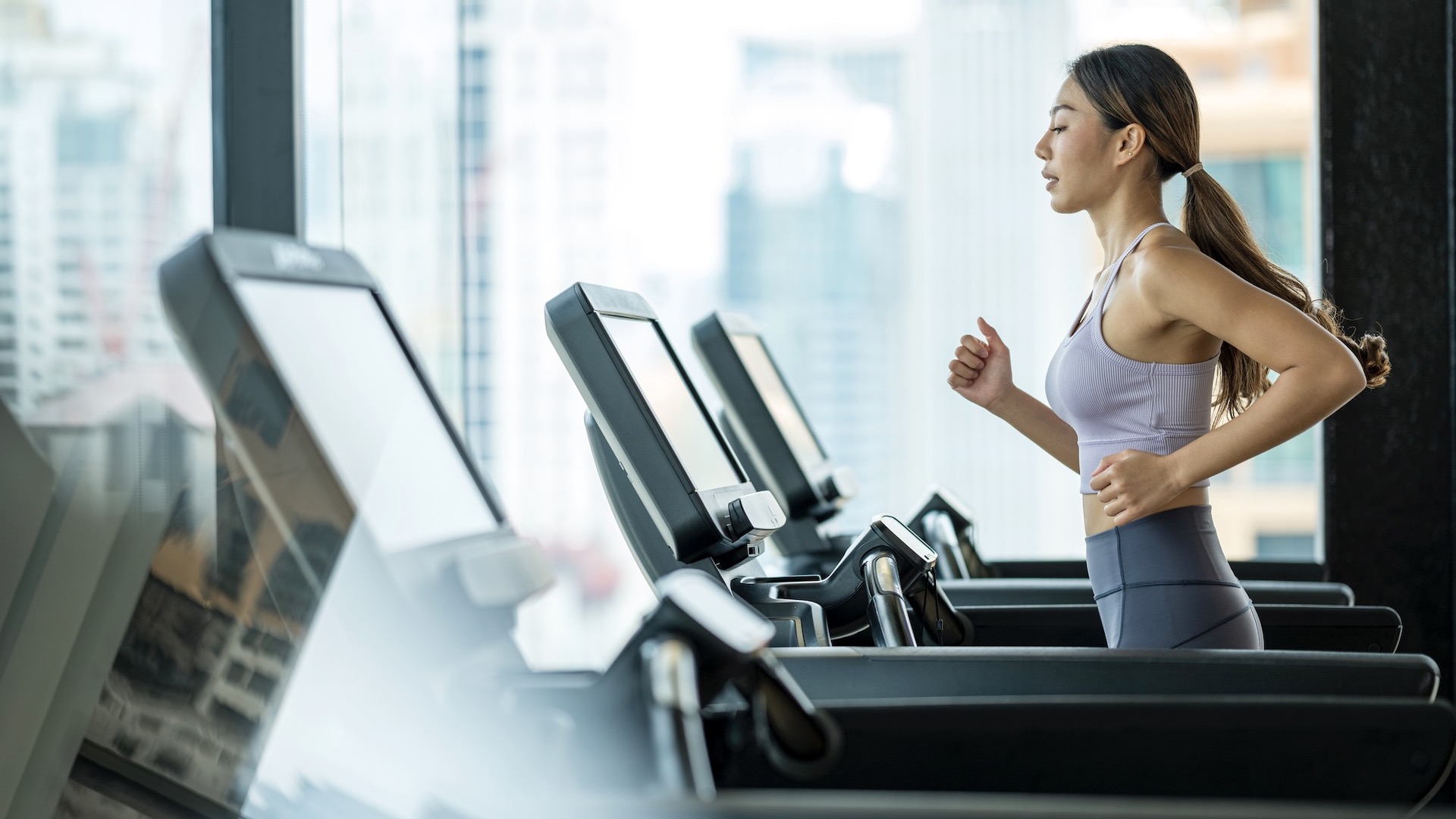
Calves
Another muscle group that’s often sore after a long run is your calves. Your calves consist of three muscles on the back of your lower leg, beginning at the back of your knee and inserting into your Achilles tendon. A key action of your calves is plantar flexion of your ankle, which is when your toes point down and your heel lifts, and this occurs every time you push off your toes on a run or when you’re jumping. Your calves also perform a stabilizing role in your ankles, to help prevent ankle rolls and sprains on uneven ground if you're trail running.
Strong calf muscles give you a lot of power with every step. If you’re not sure if your calves are strong, try standing on one foot and rising up onto your tiptoes 10 times, then switch sides. You’ll be able to notice straight away if there’s any weakness or asymmetry in your calf function and get yourself to a physical therapist for some exercises.

Tibialis anterior
On the other side of your calves, your tibialis anterior muscles on the fronts of your shins are working away to dorsiflex your foot, or draw your toes up, which you do every time you bring your foot forward (more so if you’re a heel striker). If you’re new to running, or increase your distance too quickly, it’s common to feel pain on the fronts of your shins as a result of overusing these muscles.
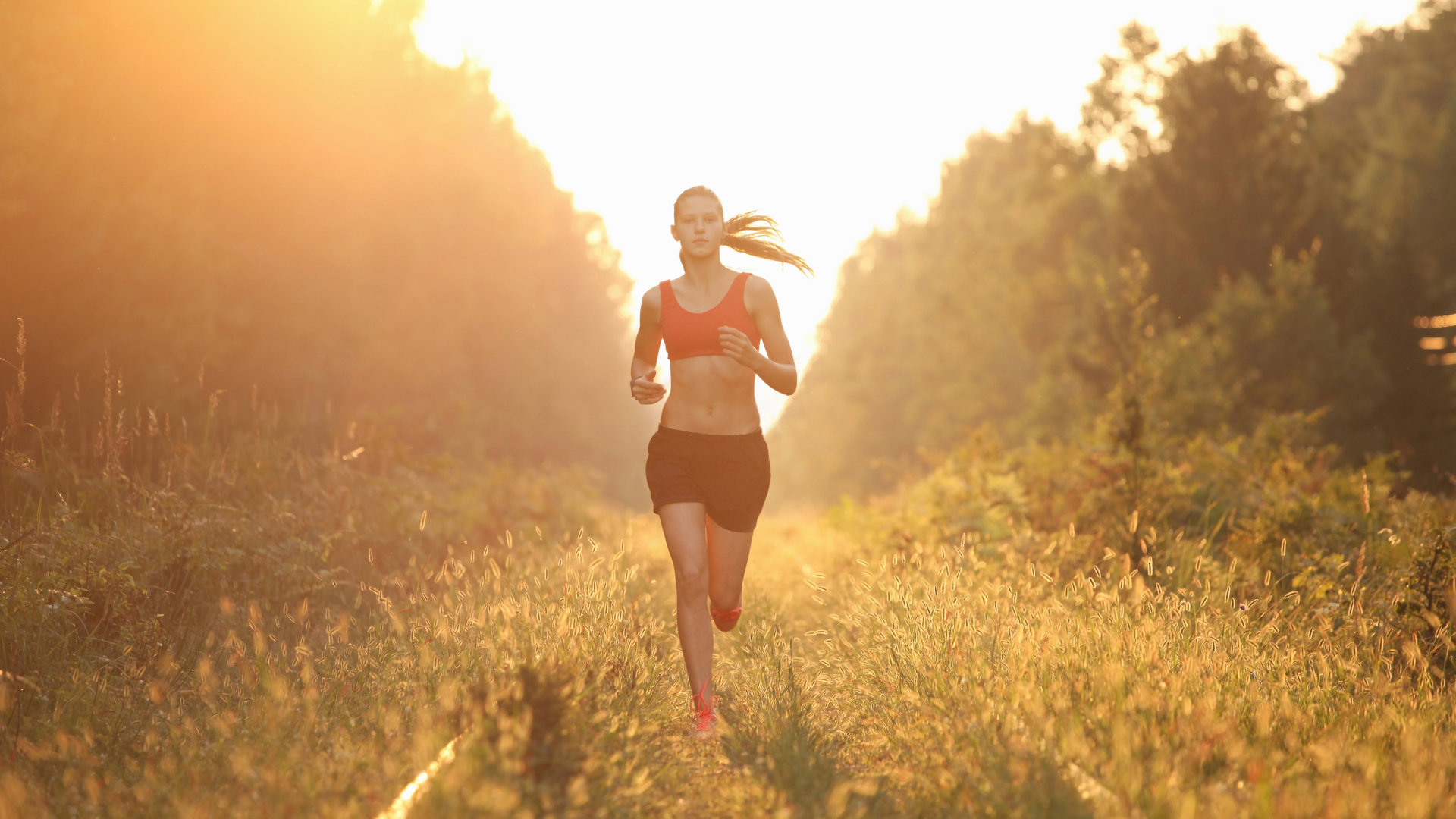
Adductors
Have you ever had sore inner thighs the day after a long run? It definitely seems weird, because running is absolutely nothing like riding a horse or using a Thighmaster where you squeeze your legs in, but your adductors muscles definitely deserve an honorable mention in running. Even though you may not be aware of it, your adductor muscles are constantly working to stabilize your pelvis, knee and femur as your foot strikes the ground and as you move forward over your foot.

Does running give you abs?
Moving up your body, running definitely makes your abdominal muscles work in a stabilizing capacity, though whether it gives you visible abs is a different question. Your transversus abdominis is a deep muscle whose job it is to protect your internal organs and stabilize your spine, so you want to keep it engaged as you run, along with your pelvic floor. If you don’t know how to brace these muscles, you’ll find that you’re more prone to cramps, stitches and injury and may have difficulty breathing properly.
There’s also a slight twisting of your torso when you run, which means your rectus abdominis and obliques are also working. However, if you are looking to strengthen your abdominal muscles, there are better core workout exercises than running for getting them strong in the first place. Once they’re strong, they’ll help to improve your running efficiency and your running routine in turn will help keep them strong. If your running has produced a six pack, it’s because of reduced body fat, not because your run is shredding your rectus abdominus. Sorry.
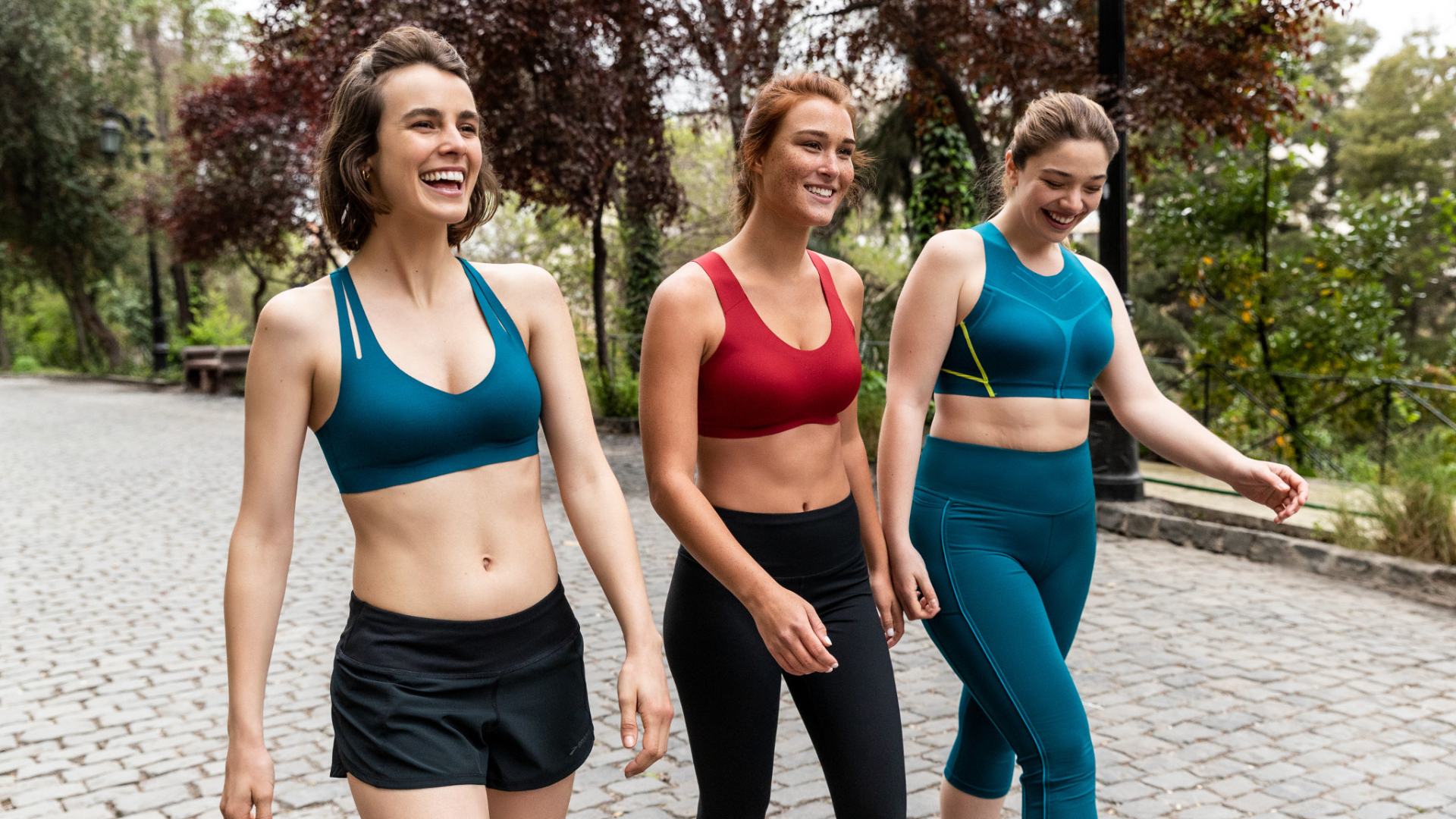
Does running affect upper body muscle?
To a lesser degree than your abs, you do use some upper body muscles for running. Your anterior deltoid at the front of your shoulder moves your arm forward, your deltoid and latissimus dorsi move your arm back and your biceps contract to keep your elbow bent. This movement won’t strengthen these muscles the way lifting weights or doing push ups will, but do it over a sustained period of time and it’s more strengthening than sitting at your computer all day.
- Best trail running shoes: footwear for speed on technical terrain
Julia Clarke is a staff writer for Advnture.com and the author of the book Restorative Yoga for Beginners. She loves to explore mountains on foot, bike, skis and belay and then recover on the the yoga mat. Julia graduated with a degree in journalism in 2004 and spent eight years working as a radio presenter in Kansas City, Vermont, Boston and New York City before discovering the joys of the Rocky Mountains. She then detoured west to Colorado and enjoyed 11 years teaching yoga in Vail before returning to her hometown of Glasgow, Scotland in 2020 to focus on family and writing.

